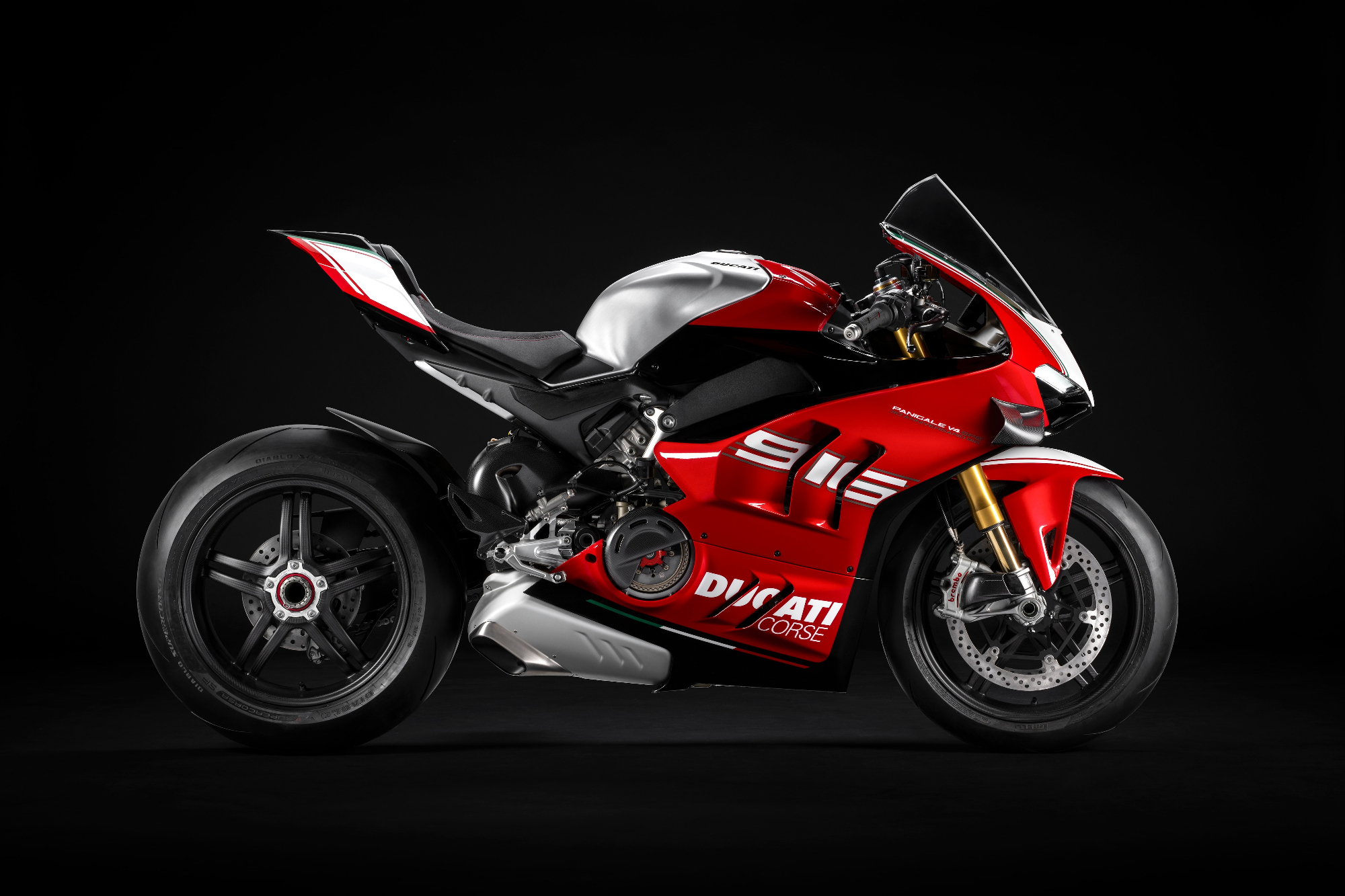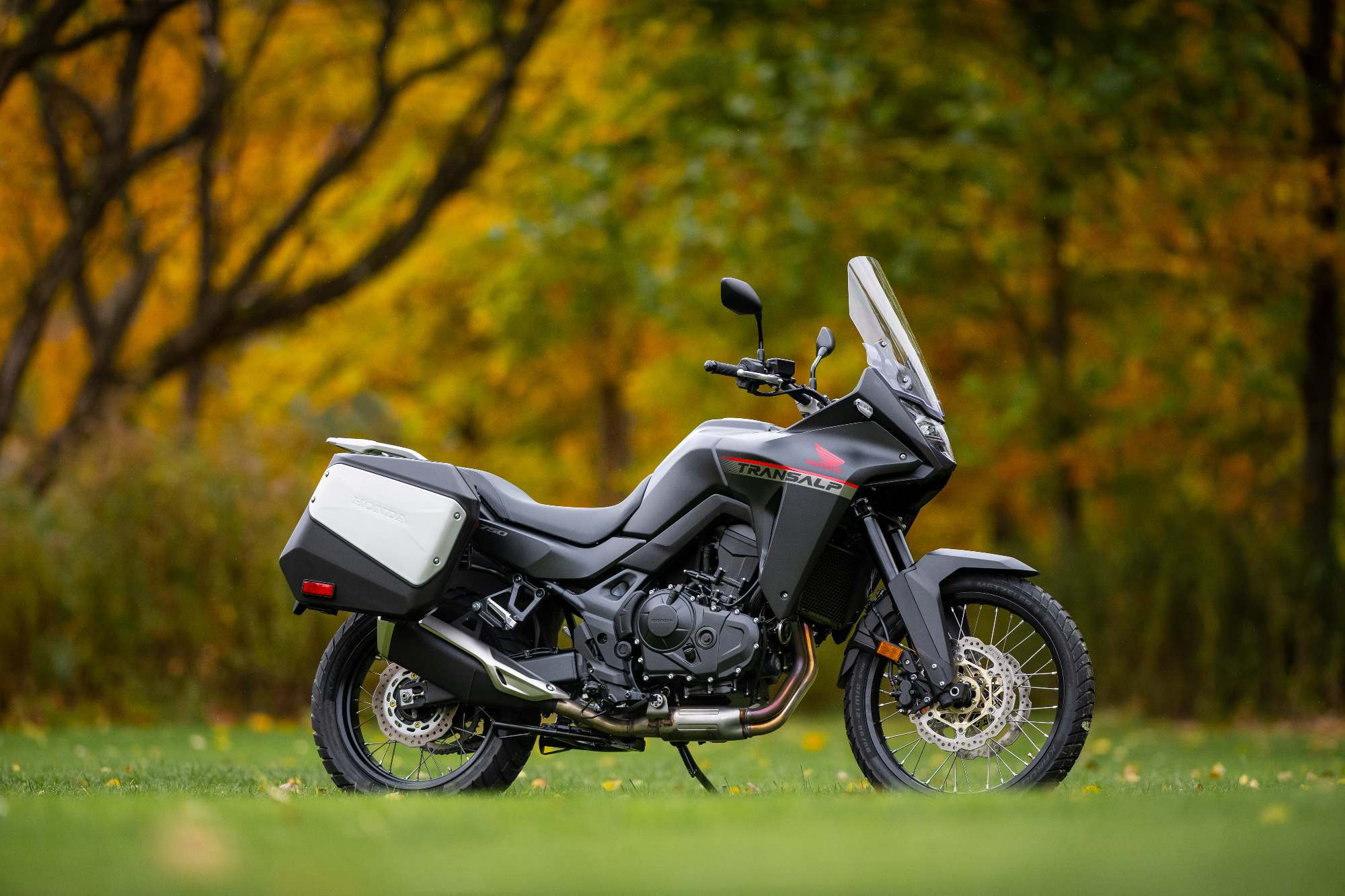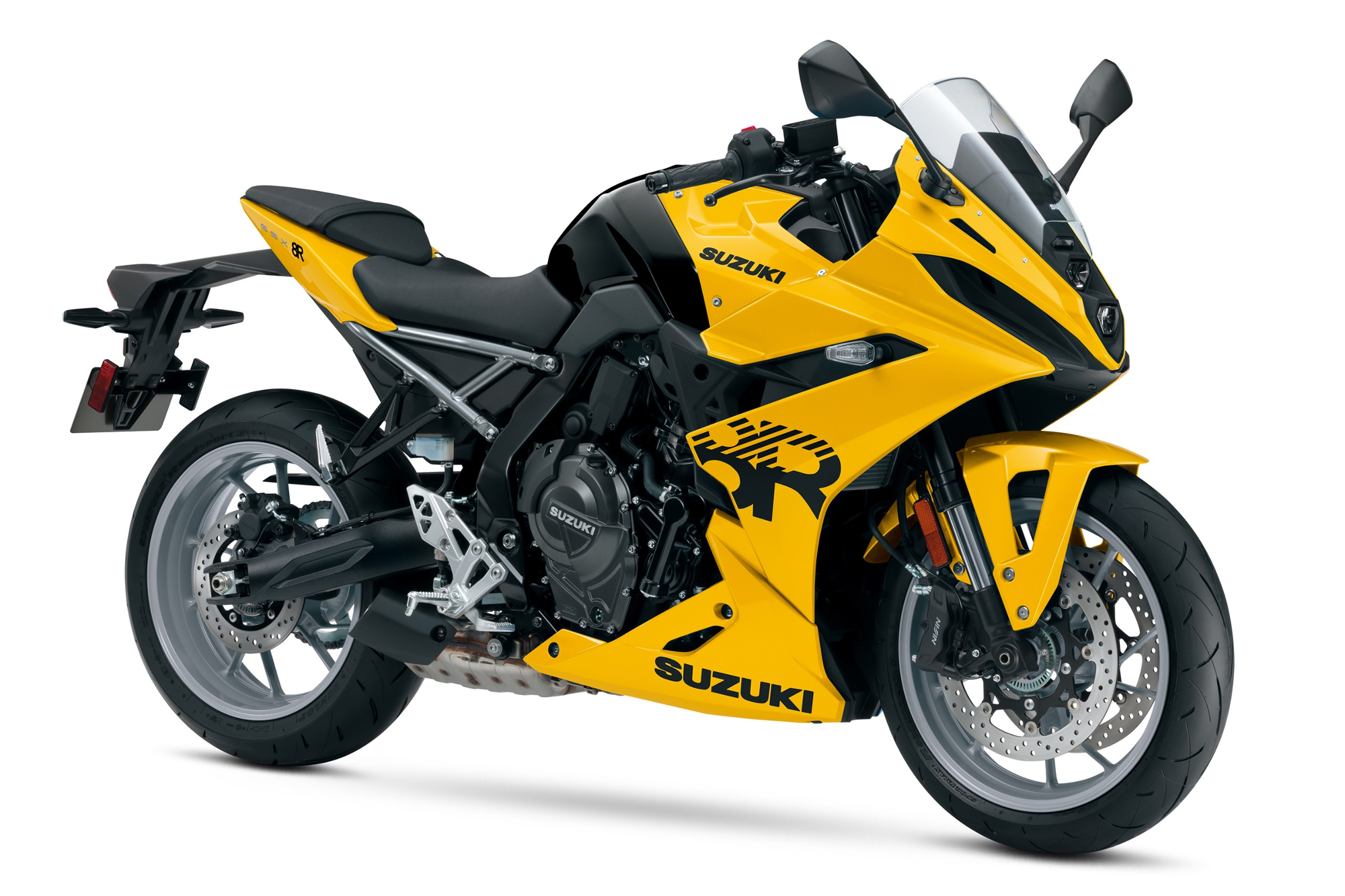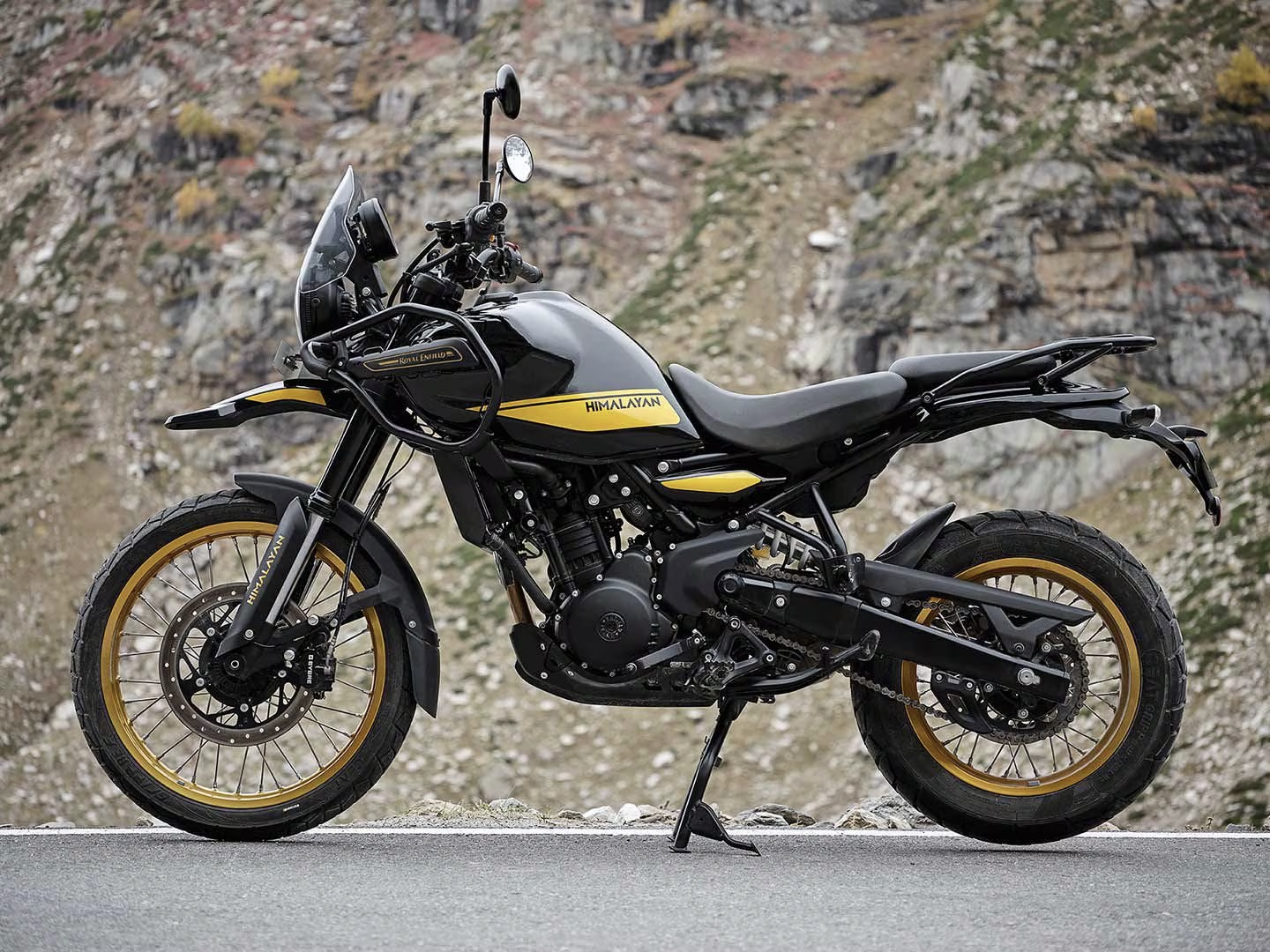New motorcycle introduction season is slowing down, the lights were turned off in the exhibition halls after the big EICMA show in Milan, Italy, ended, so now’s the time to fill the riding downtime (if you live in the colder parts of the northern hemisphere, as I do) with debate over what was interesting among what’s new.

Expensive and rare, and also with an extremely high performance envelope, the first two attributes may mean that the third is utilized on very few of the Ducati Panigale V4 SP2 30 Anniversario 916 editions. Ducati photo.
One kind of rider will drool over the Ducati Panigale V4 SP2 30 Anniversario 916, a spruced-up version of Ducati’s flagship sport bike that’s been painted to pay homage to the 30th birthday of the landmark Ducati 916, a motorcycle that’s still beloved all these years later. But with only 500 made and a price tag of $45,995, the 30 Anniversario 916s will mostly be destined to sit on a pedestal, their extreme performance envelope never exploited. It’s the kind of bike I look at, I’m glad is there, and I wouldn’t buy even if funds were unlimited.

The BMW R80G/S (right) arguably created the adventure-touring class of motorcycles. Today, the GS line epitomizes the class and the R 1300 GS is one of the most thorough overhauls in many years. BMW photo.
More riders will examine the details of BMW’s extensive overhaul of its most important motorcycle model, the new R 1300 GS, and dream of long-distance adventures, or at least dream of projecting the image of someone who could take off for Tierra del Fuego at any moment. The GS line has some of the most fervent fans in motorcycling, and with reason, given its competence and capability, but it’s overkill for me, at $18,895 (for a base model, if you can find such a thing) and 524 pounds.
Given my practical bent, the most interesting new models to me were three others that don’t cost so much I’d be afraid to really use them as intended.

If you’re the kind of rider who wants one motorcycle to do it all, the Honda XL750 Transalp makes a strong argument for itself. A year after it was introduced in Europe, reviving the old Transalp name, it’s now coming to the United States. Honda photo.
Honda’s do-it-all middleweight adventure-touring motorcycle
The most interesting new 2024 motorcycle to me is not really new at all. Europe got the Honda XL750 Transalp this year, but now it’s coming to the U.S. market for 2024. (The pattern these days: Europe gets the new motorcycles first while the United States keeps the old ones that have been phased out in Europe.) The Transalp slots neatly into the very popular middleweight adventure-touring motorcycle segment, which Honda says has quadrupled in sales over the past five years. And despite the tough competition, it’s a competitive entry, with 90ish horsepower, about 460 pounds of weight, and a price of $9,999 in the United States.
Contributing writer Liz Kiniery handled the U.S. press launch ride for us at RevZilla and was impressed. And that’s coming from a woman who rides both a Yamaha Ténéré 700 and KTM 790 Adventure R of her own and currently leads the standings in the women’s division of the East Coast Enduro Association. She found the Transalp to be a good blend of accessibility and performance. The ride modes were easily accessible and broad enough to cover all conditions, especially with the customizable user mode. The Transalp felt more manageable and accessible to her than her Ténéré 700 while giving up very little in terms of off-road ability. And the Transalp even costs a little less than its competitors.
This summer, I put more than a thousand miles on an Aprilia Tuareg 660, evaluating it from the perspective of a sport-touring rider rather than a serious off-road rider. The Tuareg offers a few features the Transalp lacks, such as cruise control and spoked wheels that allow tubeless tires. But the Aprilia also costs $2,300 more.
Riding the Tuareg, I had to think it was a viable solution for the rider who does multiple kinds of riding but wants or can only have one motorcycle. The Tuareg would be the answer for the rider who wants to do some off-road riding, while a sporty standard would be the choice for a rider who stays on pavement and maybe wants to do a track day (though I even took the Tuareg to the track and it did fine). The Transalp is probably an even better answer to that one-bike question for most riders. I even love the Transalp’s looks, except for Honda’s inexcusable decision to offer it only in matte black in the United States. I’m on record about my feelings about the wave of gray bikes on the market, and matte black is hardly better.

The new twin-cylinder sport bikes make better, less expensive, and more accessible street bikes for the majority of sport riders. Suzuki is joining the class with its new GSX-8R for 2024. Suzuki photo.
Suzuki gets into the twin-cylinder sport bike game
If middleweight adventure-touring motorcycles are booming in popularity, the twin-cylinder sport bike class is not far behind, as part of the inevitable reaction to things getting too extreme. Over the years, the 600 cc sport bike class got ever more tightly focused, as they were judged largely on peak power and lap times. Ergonomics shifted toward a racer’s tuck. Power shifted upward until not much was happening until 8,000 rpm. All of that was great for racing, but made them worse for daily riding on the street. Not to mention the insurance rates that accompanied the ever-increasing performance.
The 600s are still with us, but they’ve been supplemented by the more accessible and more useful class of sport bikes built on parallel-twin engines, like the Yamaha YZF-R7 and the Aprilia RS 660. Now Suzuki is entering the class with the new GSX-8R, a full-fairing version of the GSX-8S naked bike. With three ride modes, traction control, a bi-directional quickshifter, LED lights, and a TFT display, the newest Suzuki comes with modern features but still costs four figures, with an MSRP of $9,349. Figure on horsepower in the low 80s and a weight not too much above 450 pounds. That makes it a touch heavier, a little more powerful, and about the same price as the direct competitor R7.
The significance here is not that Suzuki has invented anything new. Instead, it’s one more new option in a performance class that’s better suited to the way most people really ride in the real world. The four-cylinder 600s are not dead. Honda even brought back the CBR600RR in Europe, where it had been discontinued several years ago. But as much as I love the four-cylinder 600s and respect their incredible performance envelopes on the track, the twins are where the action is these days, and with good reason. They make more sense for more riders.

The Triumph Scrambler 400 X, and its sibling, the Speed 400, have the potential to expand Triumph’s reach from two directions. They can appeal to beginning riders in markets like the United States and Europe, and to riders trading up in places where small bikes dominate, such as Asia. Triumph photo.
Triumph and Royal Enfield meet in the middle
My third motorcycle choice is actually two motorcycles. If you wanted to chart the rise and fall of empires and societies in the 20th and early 21st centuries in terms of motorcycle companies, you probably couldn’t do better than look at the trajectories of Triumph and Royal Enfield. Both originally British companies, the first Royal Enfield motorcycle was built in 1901 and the first Triumph motorcycle was built in 1902. In the 1950s, Royal Enfield began building motorcycles in India with a local partner. The British motorcycle industry, once the most powerful in the world, eventually died out. Royal Enfield carried on as an Indian company, with the former colony owning the brand associated with the colonizers, and the new Triumph was born from the remains of the original Triumph, starting from scratch and carrying over nothing but the name. Today, India is the world’s largest motorcycle market, Royal Enfield is aggressively building its exports to the rest of the world, and Triumph is now building motorcycles in India with local partners.
That brings us to the recently unveiled Royal Enfield Himalayan and the Triumph Speed 400 and Scrambler 400 X. My RevZilla colleagues had the chance to test both new offerings recently in India. Spurgeon and Zack rode the Triumphs on an epic journey to Umlingla, the highest motorable road in the world for an episode of CTXP, and Dustin went to the introduction of the new Himalayan.

The new Royal Enfield Himalayan’s liquid-cooled engine is more evidence of how serious the company is about expanding beyond its home country of India and becoming dominant in the middleweight motorcycle segment. Royal Enfield photo.
These motorcycle manufacturers are essentially meeting each other in the middle. The new Himalayan’s liquid-cooled engine is Royal Enfield’s attempt to go beyond its traditional platform with a more modern powerplant to compete with manufacturers outside India. The Speed 400 and Scrambler 400 X, the first single-cylinder motorcycles from the new Triumph, are aimed at both the European and North American consumer who may be downsizing or adding a second, lighter bike, as well as beginners, and also at the many more numerous riders in markets like India where these bikes will be upscale models for growing numbers of middle-class consumers looking to step up from smaller, totally utilitarian bikes. The British company that supplies engines for Moto2 race bikes and the Indian company known, until recently, for manufacturing only the same old dated, air-cooled powerplants it had made for centuries, are both venturing into new territory and finding themselves once again competing in the same space.
It will be interesting to see how the Scrambler 400 X and new Himalayan compare. On paper, they look to be not that far apart. What’s fascinating to me is not just this new competition between two new 2024 motorcycles, but also how it’s an echo of business competition from a century ago between two companies that have fallen and risen again. Just like all powerful empires think they will rule forever, and they never do.
As you can see, my choices of the most interesting new motorcycles from this season are not the most exotic, most expensive, most powerful, or subjectively the most attractive. They’re the ones that advance us, even if incrementally, into the future, or illustrate the trends we’re living through today, or illustrate the amazing twists of history that brought us to where we are. Ride on into 2024.
